In French, the word for pink is rose, a flower-inspired moniker that goes back to the Latin of Roman times (and those pleasure-loving Romans, with their decadent petal-laden parties).

But, as a shade, pink wasn’t really a ‘thing’ in France until the 18th century. Before that, it was simply a lighter version of red — the colour of power and virility — and as such usually linked to men rather than women, who were more often dressed in blue, the colour of the Virgin Mary.
(By the way, it was around the turn of the eighteenth century that pale red came to be known as ‘pink’ in English; it was named after the then-popular flower dianthus, also called pinks, whose petals have a zig-zagged edge — which is why we say ‘pinking shears.’)
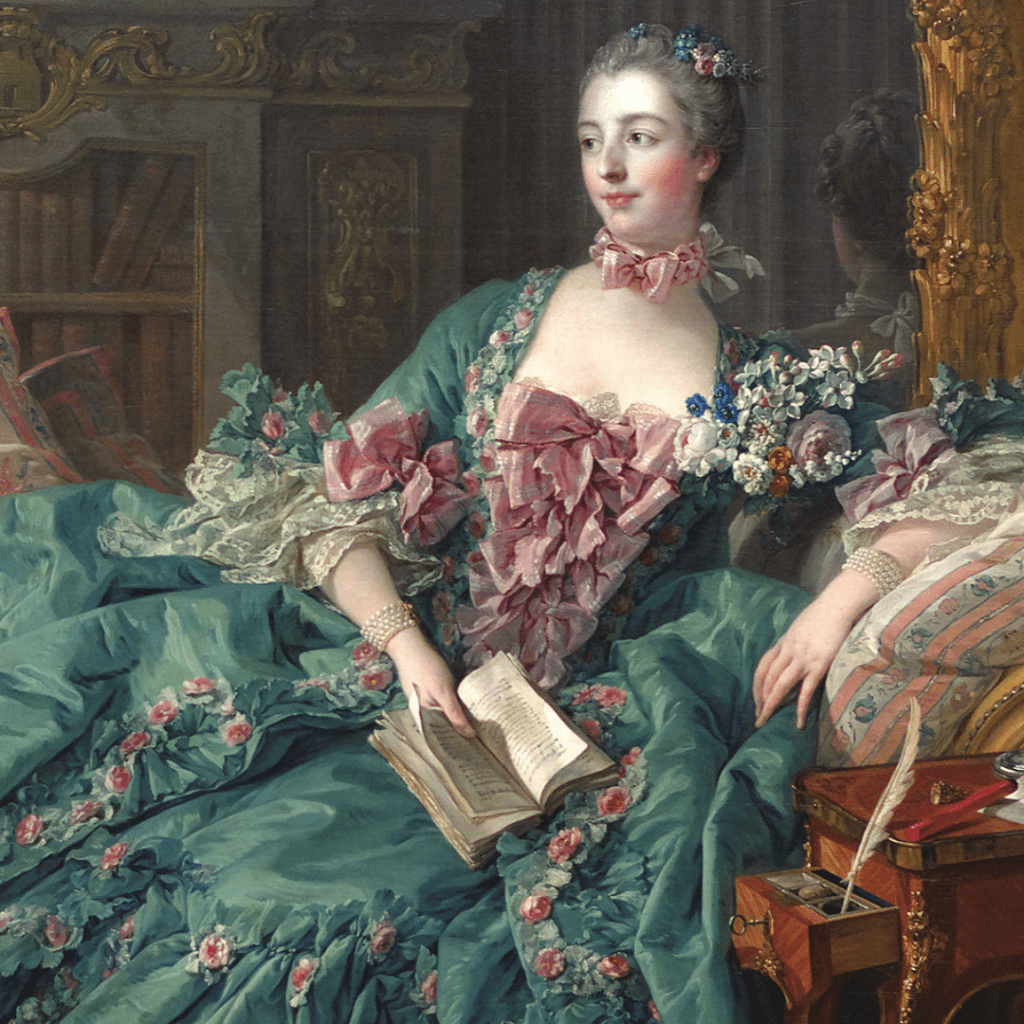
It was Madame de Pompadour, also a lover of roses, who made pink a feminine phenomenon in the western world.
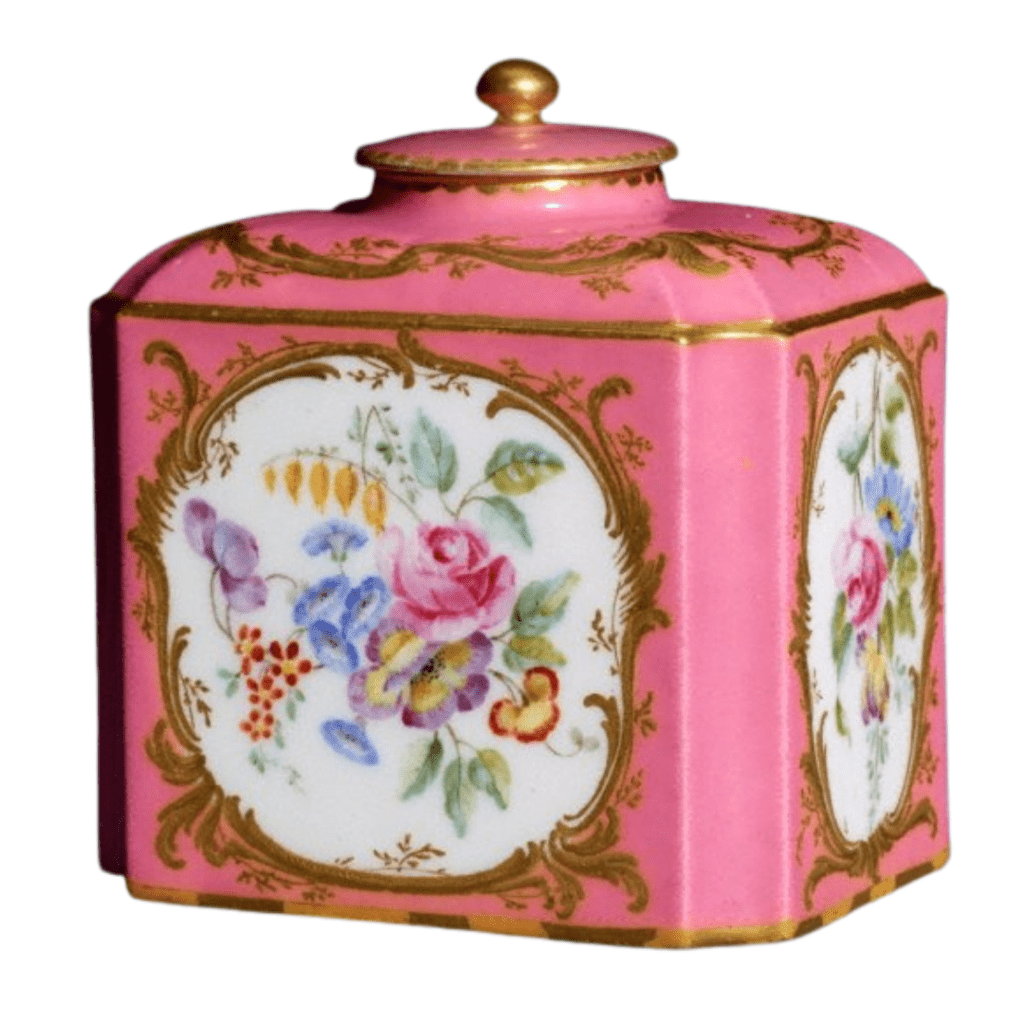
Her favourite porcelain company Sèvres, in 1757, concocted a specific pink for her, adding dashes of blue, black and yellow to red and white (above). It’s still known as Rose Pompadour.

In those Rococo years, pink was a popular colour for interior decoration, as well as in whimsical, pastel-hued paintings by the likes of François Boucher and Jean-Honoré Fragonard.
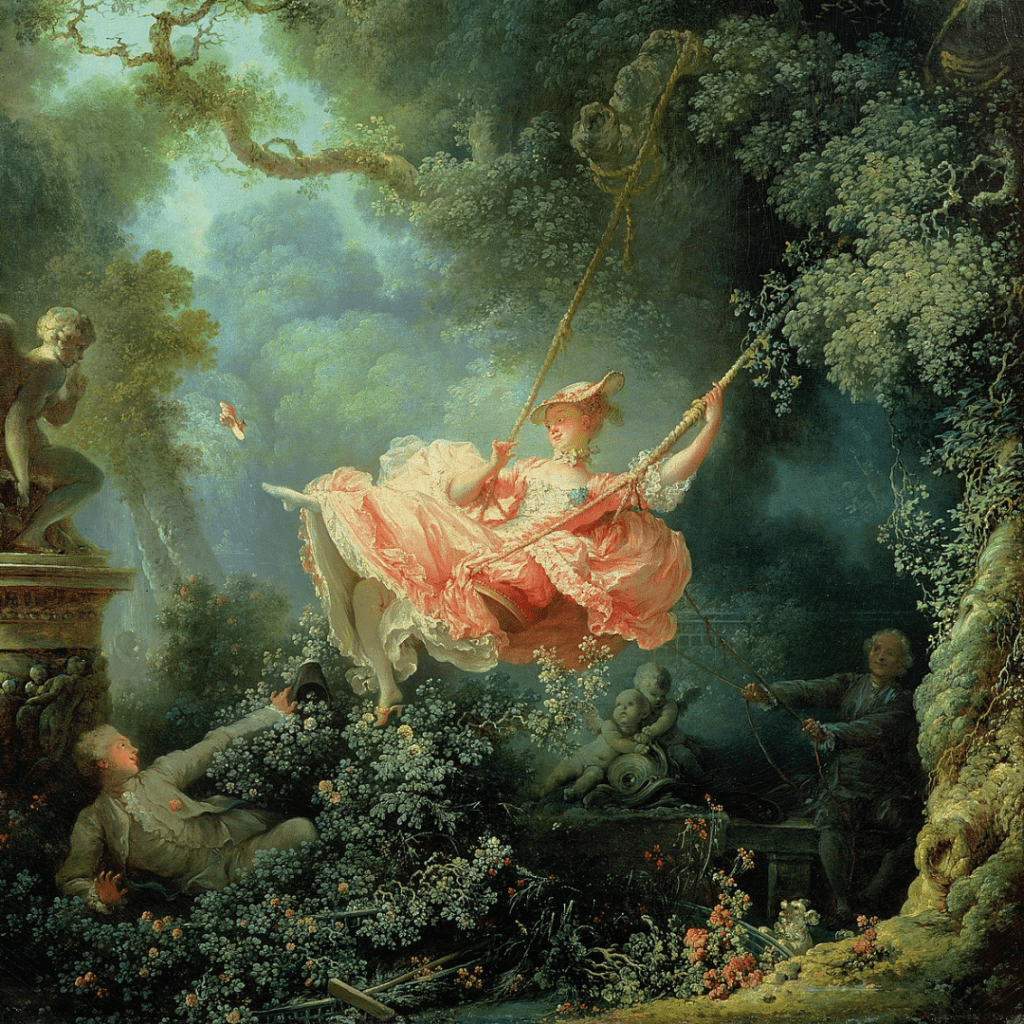
By the following century, pink was in serious fashion.

Which is not surprising, because it was an era when women were dressed as delicate dolls or frilly flowers.
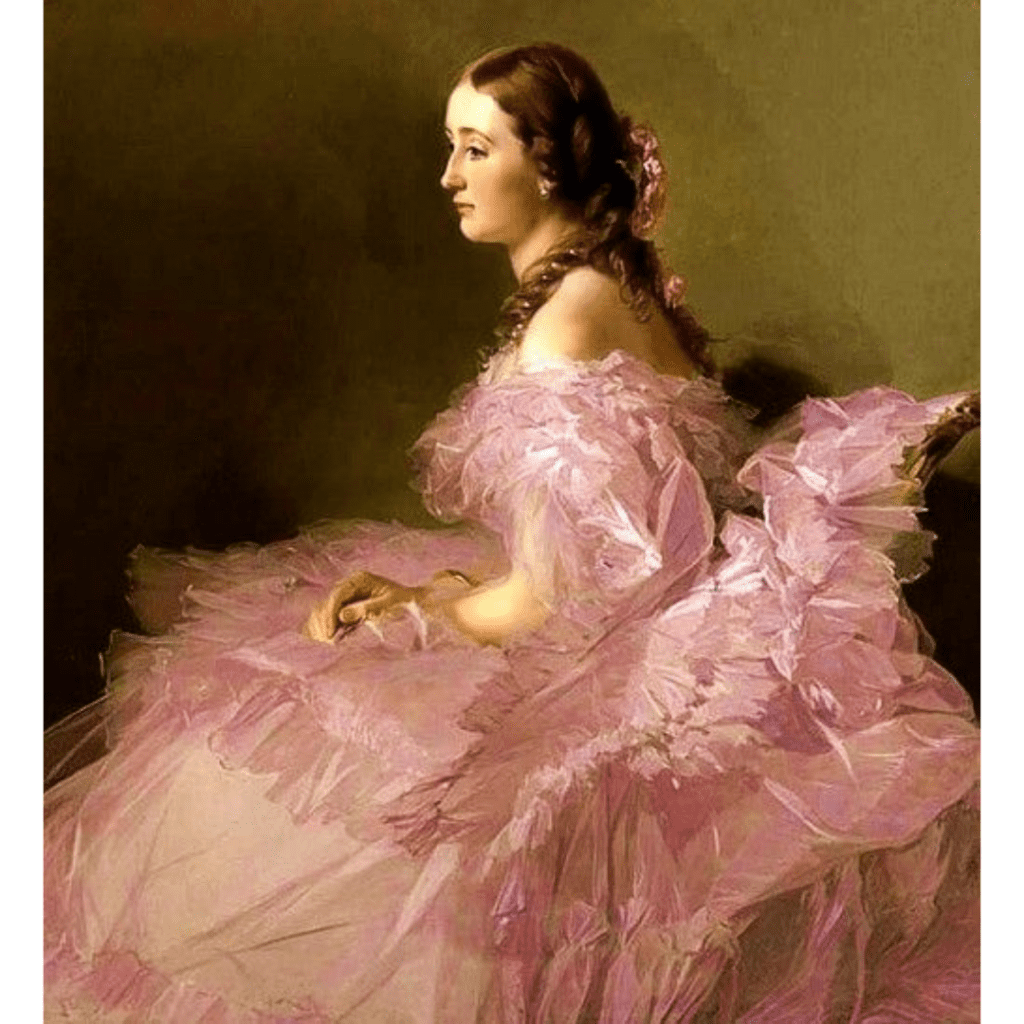
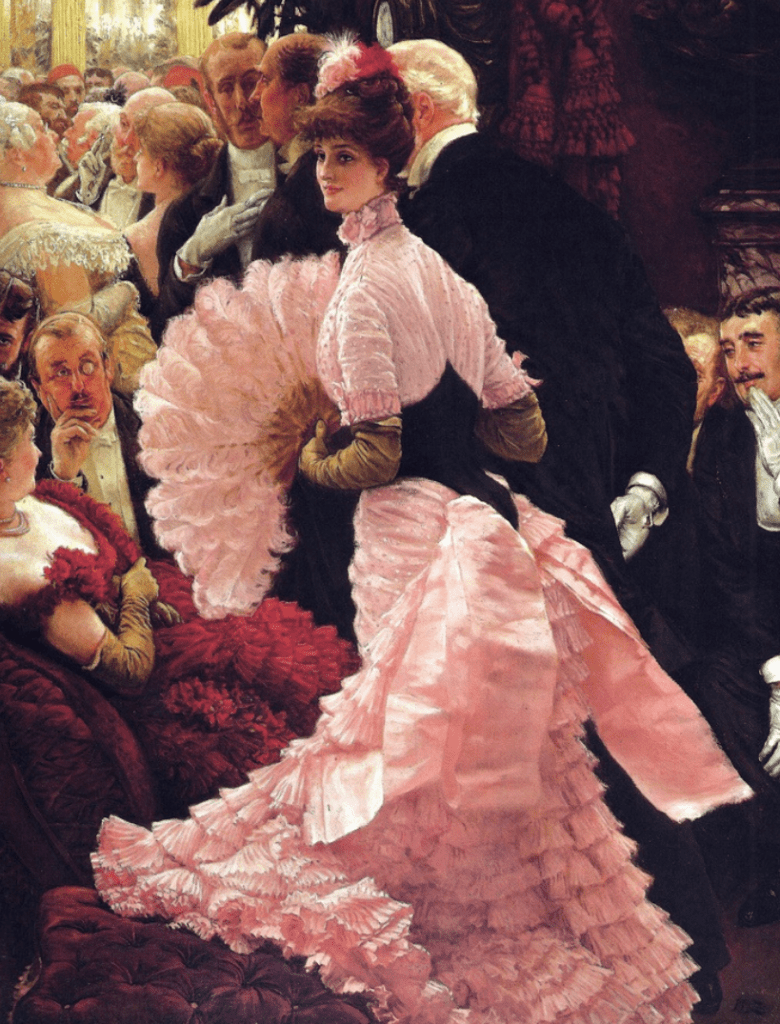
Painters continued to lavish their canvases in soft shades of pink, especially the Impressionists.

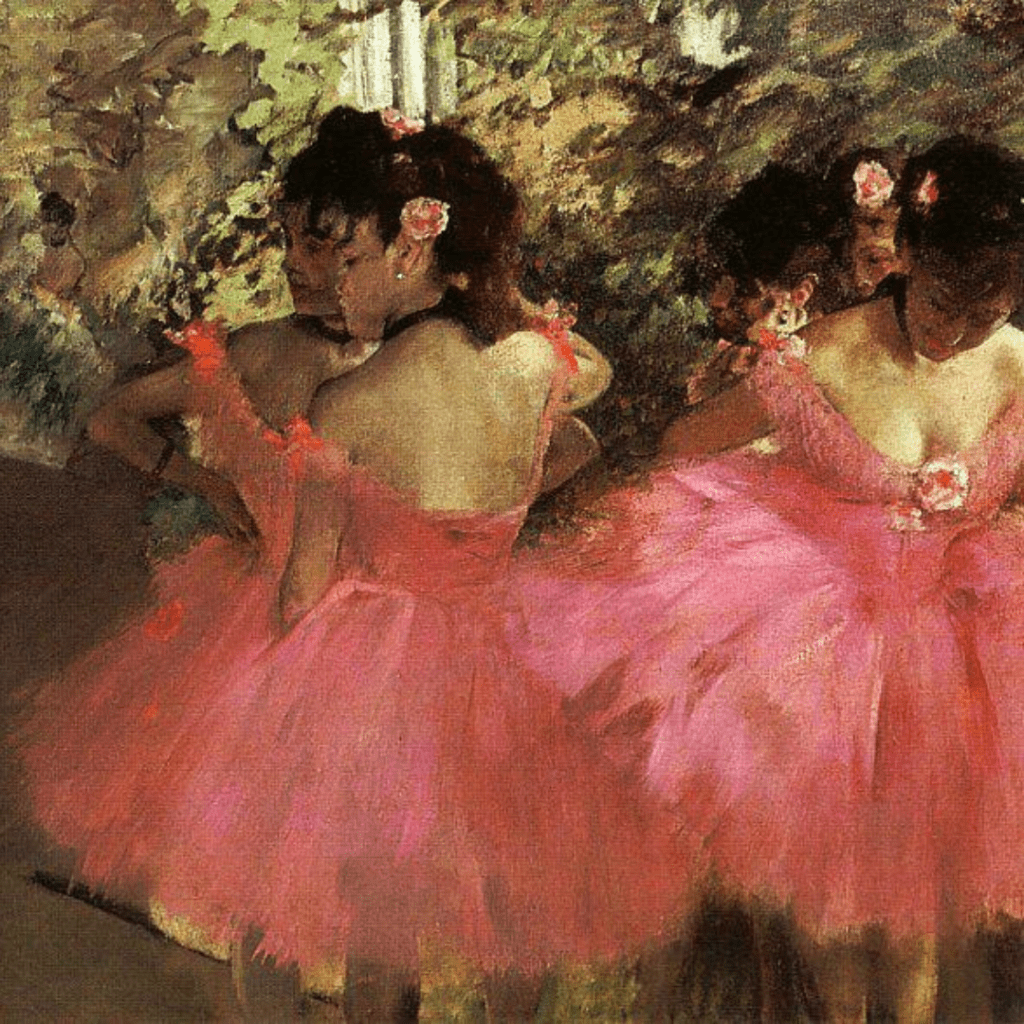
It wasn’t until 1937 that pink became modern, thanks to surrealist designer Elsa Schiaparelli, whose packaging for her perfume Shocking inspired a new shade, Shocking Pink, a magenta mixed with a dash of white.
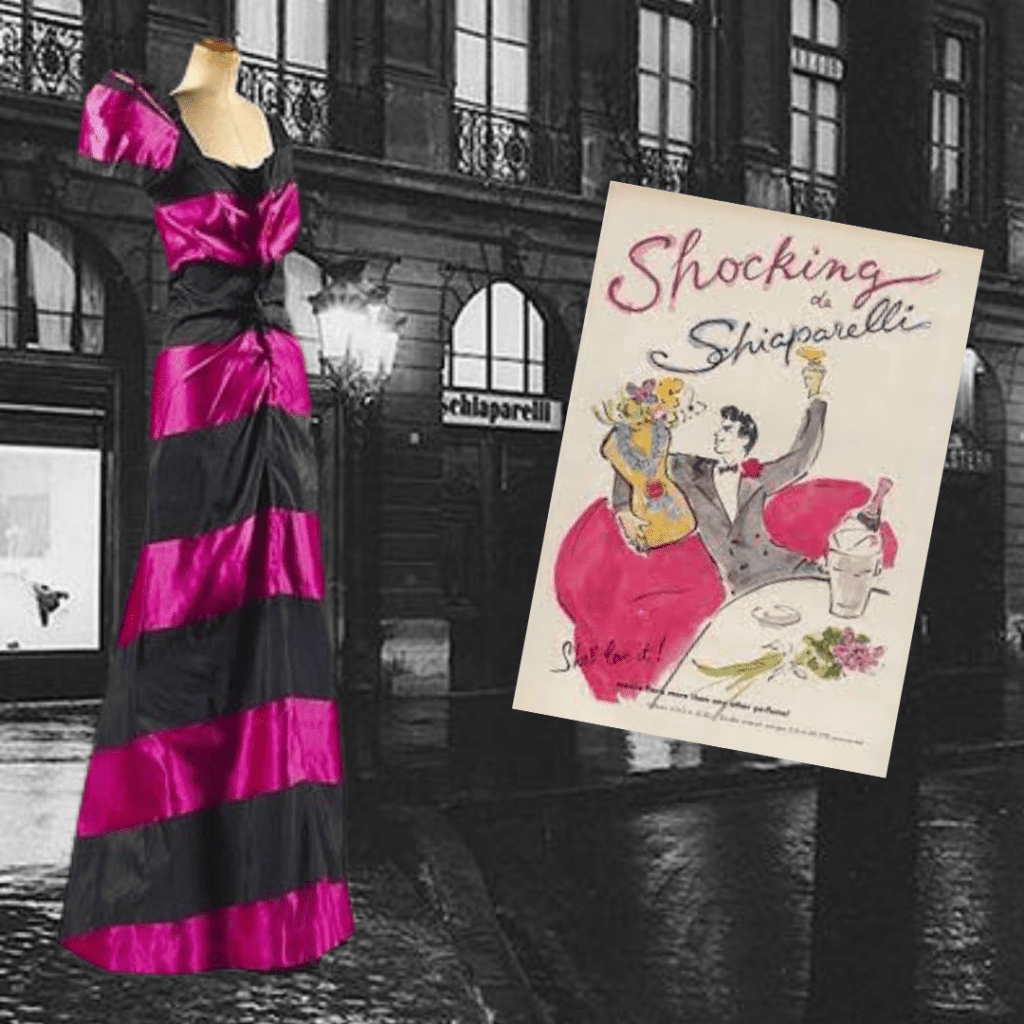
‘I gave to pink the nerve of the red, a neon pink, an unreal pink,’ the designer proclaimed.
By the 1950s, pink had become the unofficial colour of girls (and blue of boys) in the west. And for women, too.
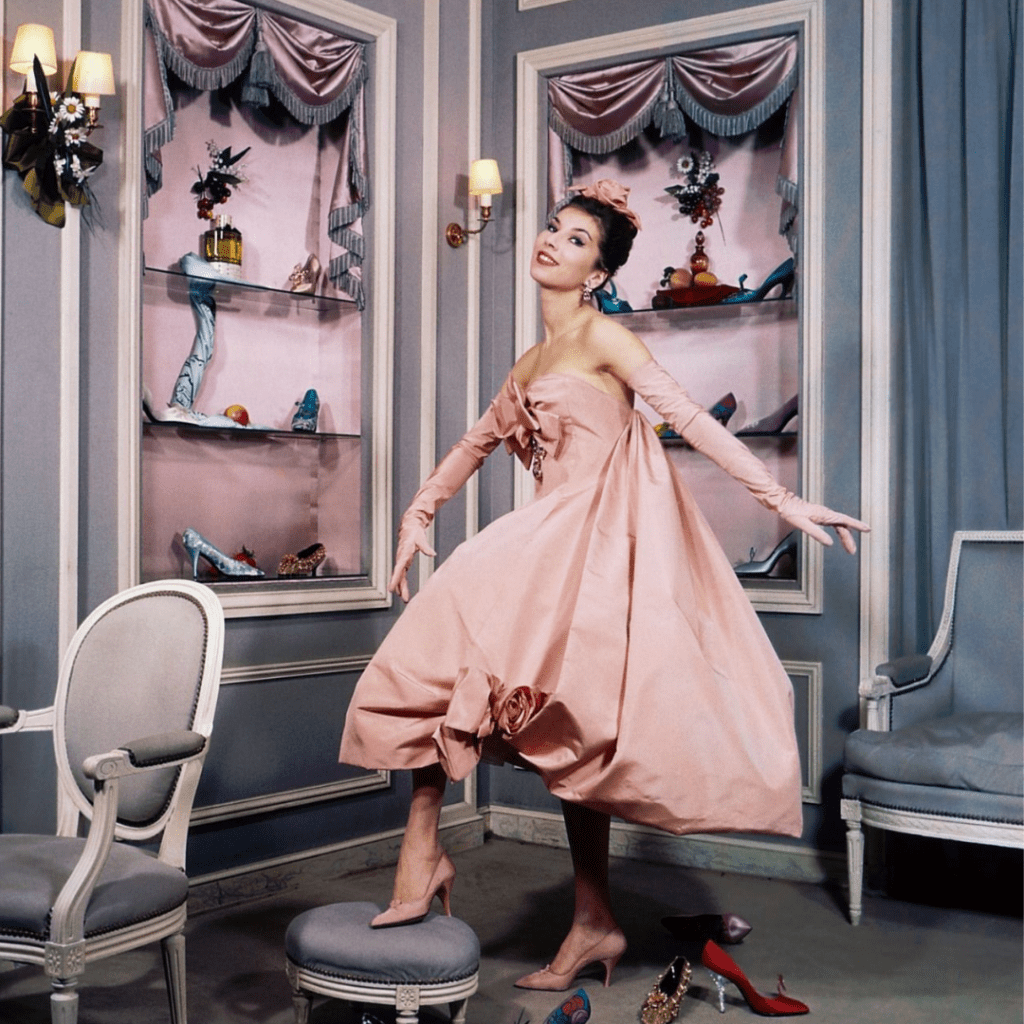
Dior (above) and Givenchy whipped up gorgeous gowns in the shade, while Chanel’s pink tweed suit was an iconic look for the 1960s.
In the bigger-is-best 1980s, Yves Saint Laurent had a hit with fuchsia-bow dresses (below) and Christian Lacroix’s pouf dresses sold like hot(-pink) cakes.
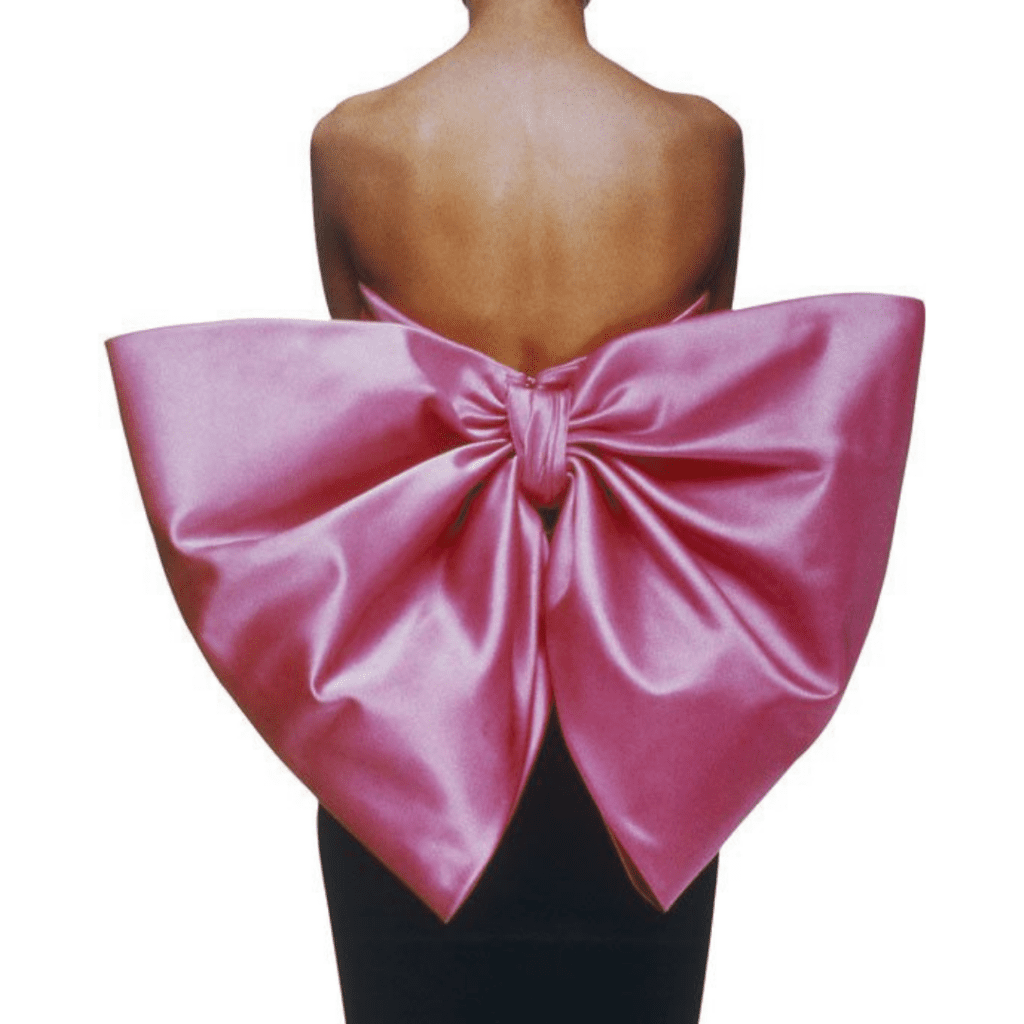
Another fabulous moment in pink Parisian fashion was in 1991, when Azzedine Alaïa launched his ‘Tati Collection’ (below) — with the pink-and-white ‘vichy’ check of the popular cut-price clothing chain.
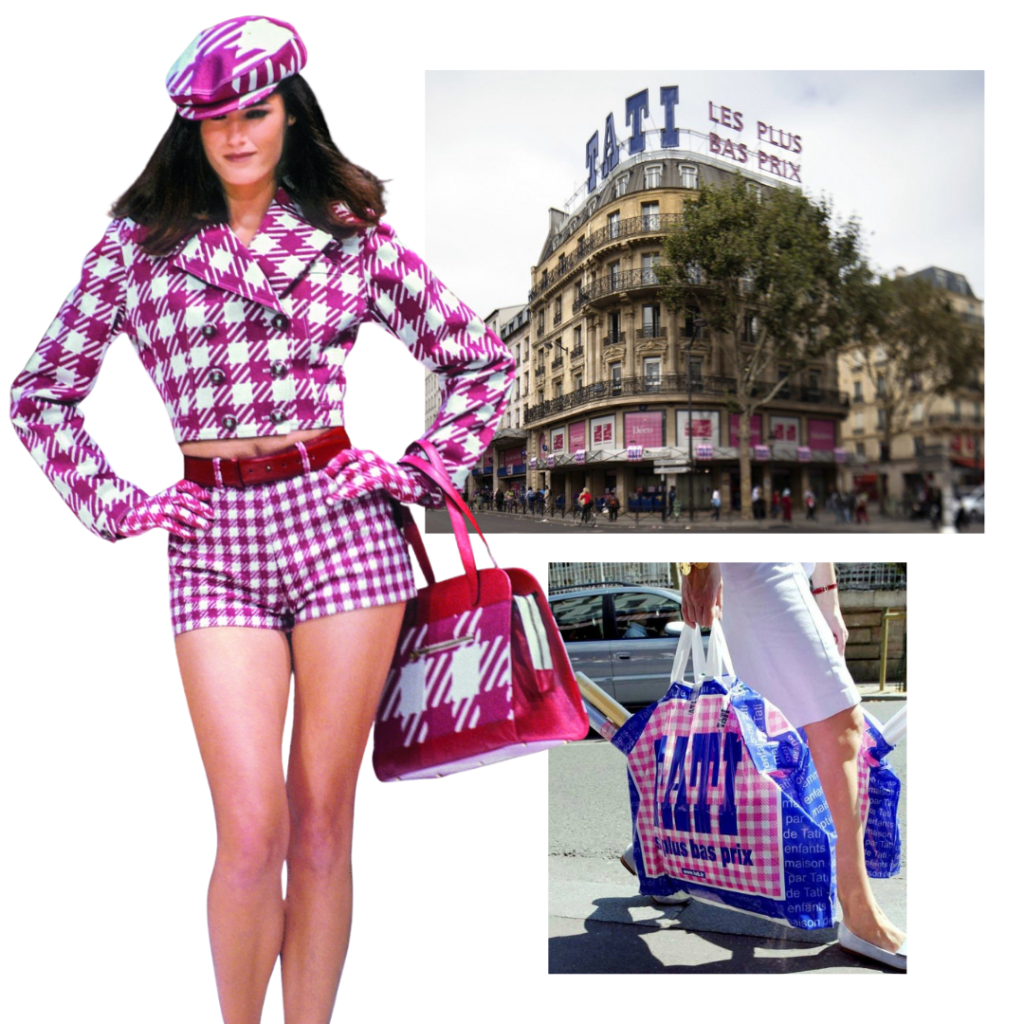
All shades of pink come and go from the Parisian catwalks these days, but there’s a shade of pink that evergreen in Paris. It’s a soft blush. Like the colour of some of Paris’s most covetable buys. Think the satiny shade of Repetto ballet slippers. The hue of the fondant icing on a Ladurée Réligieuse à la Rose (which has, happily, just been brought back) …

… The pale-pink of the prettiest flower at the marché aux fleurs: the peony, Paris’s latest favourite flower.
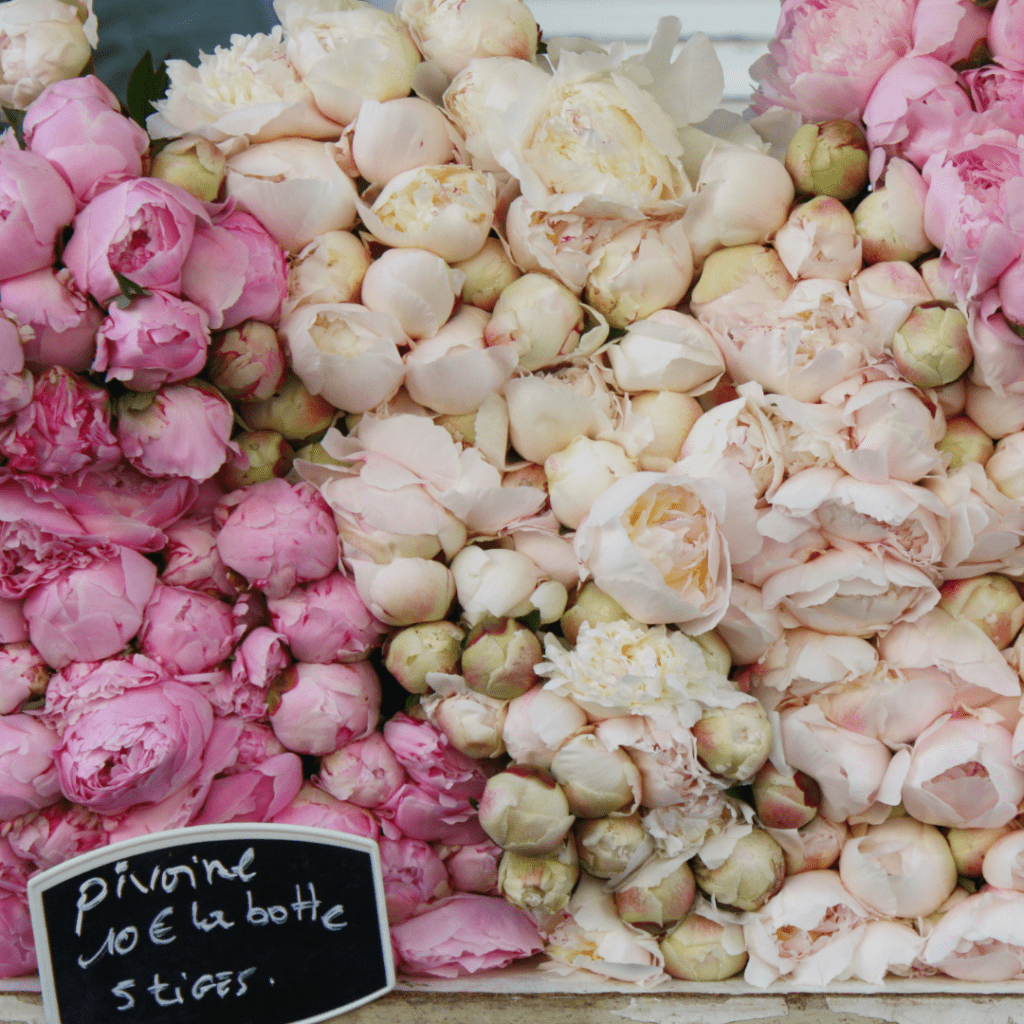
Sorry, rose! At least, as a colour, you’ll always be in fashion.

